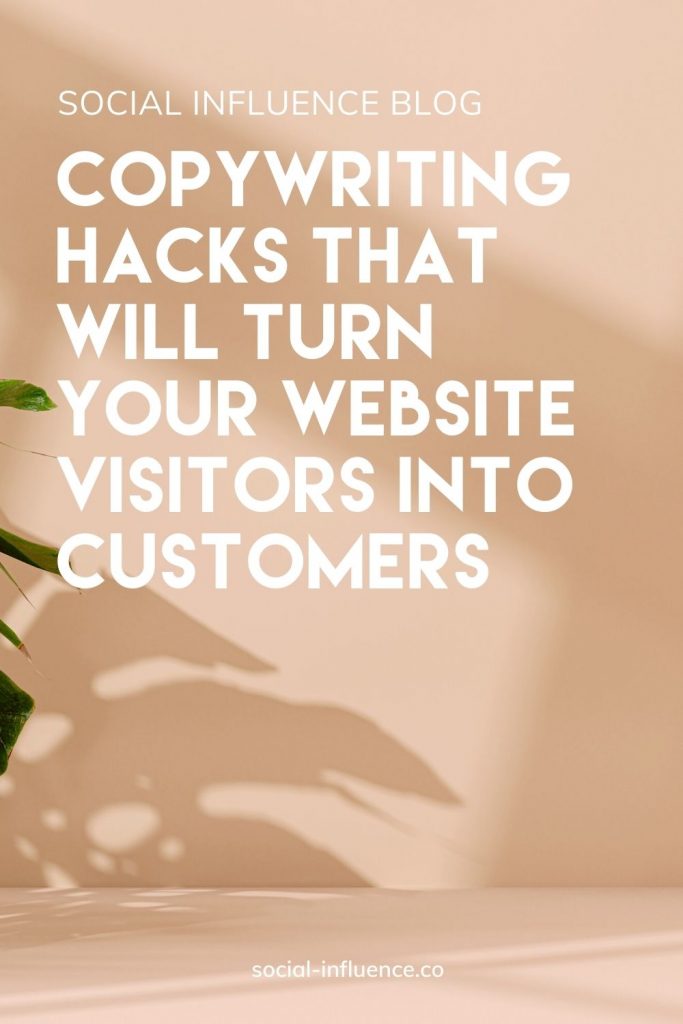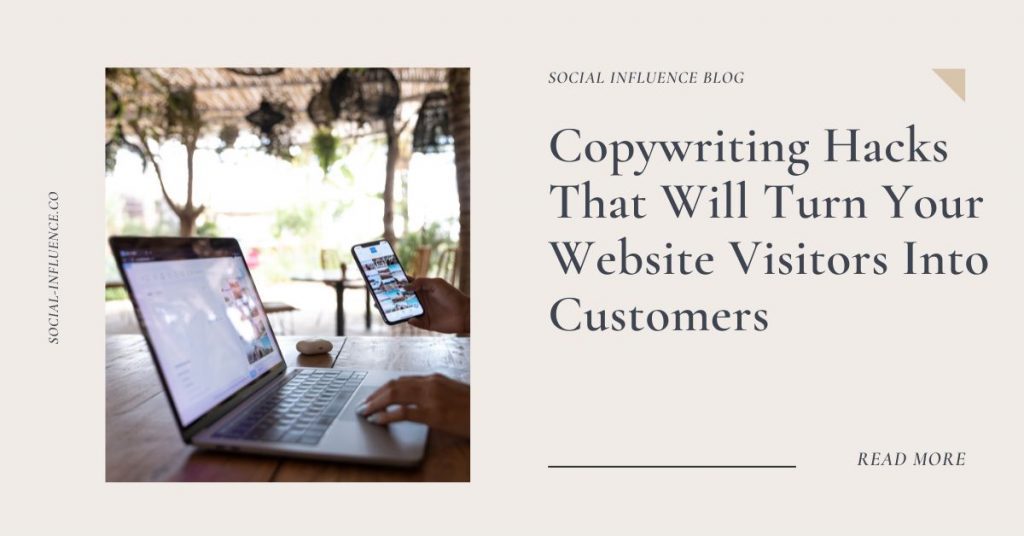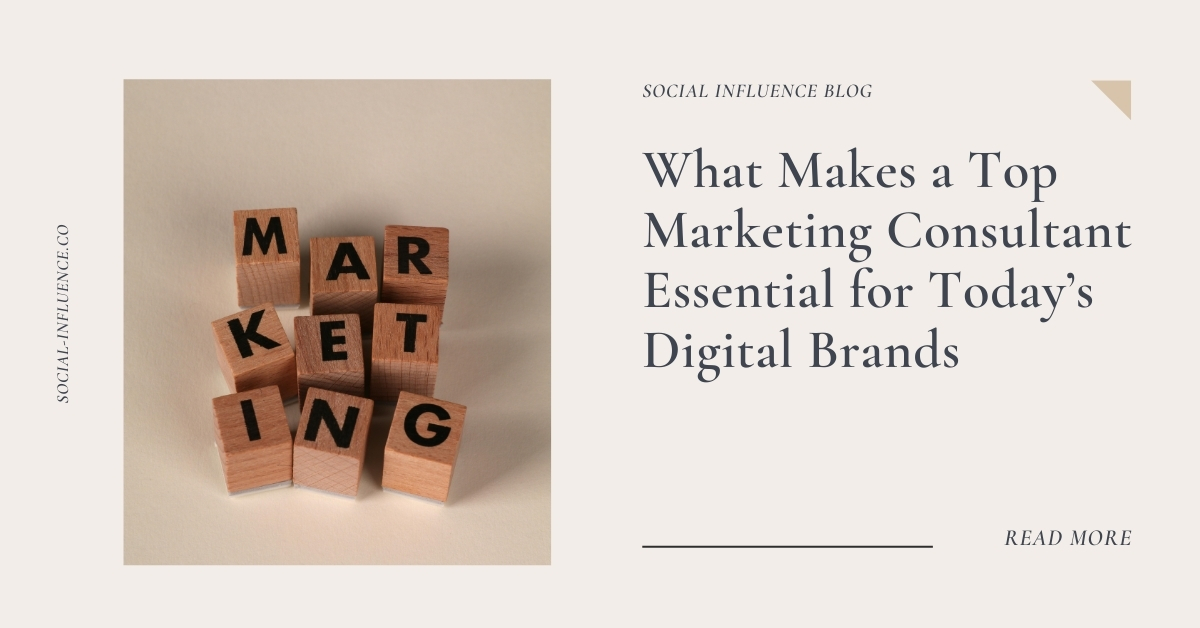|
Getting your Trinity Audio player ready...
|
Want to increase conversion rates? If the answer is yes, you are not alone. Each marketer’s goal is to make users take some kind of action on their website, whether it’s collecting email addresses, making a purchase, or calling. However, there is one thing that copywriters and marketers need to do in order to grab people’s attention and motivate them to do what they want them to do: They need to utilize the right website copywriting hacks.
Tips for writing copy that sells:
A website’s copy is one of the most important aspects of your online marketing strategy. Without it, you can quickly lose visitors who would otherwise have been interested in what you have to offer.
Here are some tips for writing copy that will keep visitors reading and convert them into buyers:
– Keep the tone conversational. Your website should sound like a friendly conversation between two people. Don’t write like a textbook or magazine article, but as if you’re talking to someone face-to-face.
– Don’t be afraid to use humor. A good sense of humor can help make your website more appealing and memorable — and it also shows that you are not taking yourself too seriously, which is an important quality for any business owner or manager.
– Use lists and bullet points whenever possible. People tend to scan rather than read word for word on the Internet, so break up text into lists of bullet points wherever possible — especially in descriptions of products or services offered for sale on your site. This makes everything easy to read at a glance and easy to remember later on when someone needs help remembering what they wanted from your site!
– Make sure you use the right words. Use simple words rather than complex ones. Use active verbs instead of passive verbs when you can. Replace nouns with pronouns whenever possible (e.g., “You” instead of “Your”). Don’t use contractions like “don’t” in formal writing unless it’s absolutely necessary (e.g., in an email).
– Use simple words rather than complex ones because simple words are easier for people to understand. While we all know this, we sometimes don’t follow through with it when we write our own.
– Short sentences and paragraphs are easier to digest than long ones. They make your content more scannable so readers can easily find what they’re looking for on your page, and they make your content easier to understand since shorter sentences are less complicated than longer ones (and vice versa).
What Kind of Copy to Write on a Business Website
There are many different types of copy that you can write on your website. In the end, it depends on your company’s style and tone, as well as the purpose of your website. Here are some examples of what you might want to write:
Home Page:
The home page is the first page users see when they visit your site. It can be a powerful tool for driving traffic, getting leads and converting visitors into customers.
Here are some ideas to get you started:
- Introduce your business. Tell people what you do, how you do it, and why they should care.
- Tell your story. Share information about yourself as a company, including background information and history, milestones and future plans.
- Showcase your products or services. Make sure visitors can clearly see what you have to offer by using images and videos to showcase each product or service individually.
- Include contact details so visitors can easily reach out with questions or comments.
About Page:
This is an introduction to your business in which you can describe what you do and why you do it. If it helps your customers to get a sense of who you are, you can also include pictures or videos of your team members.
Consider writing about the following topics on your about page if you don’t know what to write:
- Who are you?
- Why do you exist?
- Where are you located?
- Why should people care?
- What problem does your product or service solve?
- Who benefits from it?
- Why is it better than other solutions out there?
- How have you solved that problem in the past?
- How will you solve it in the future?
Read our article “How to Create a Killer About Page” here.
Services Page:
If you have multiple services, or even just a few that are particularly important, this is where you would put them down in one place for easy access by visitors to your site.
Make sure you focus on the services that are most important to you and your clients. Imagine you own a copywriting business. You should definitely list out all of the services that you offer on your site, but not every single service. Only include the ones that really matter, like mowing lawns or planting flowers.
The best way to do this is to write down all of the services that you offer, then cut them down until they only include the ones that matter most. Then write one paragraph about each service with a brief description and an explanation of why people need it in their lives.

Product Information Page:
If there is any information about products or services that customers will be interested in knowing before making a purchase decision, this section is where it goes.
Writing copy for product pages is a challenge. You want to make your product sound interesting, but you don’t want to be too promotional. You need to explain what it does, but you also need to describe why it’s better than similar products.
Here’s what you need to know about writing for product information pages:
1. Know your audience
2. Tell a story with benefits
3. Make the buyer feel like an insider
4. Make it easy for users to find what they’re looking for
What are Call to Action and why do they matter:
A call to action is a command that tells the visitor what you want them to do next.
It can be in the form of a button, a link, or even just a plain old sentence.
A call to action is essential for conversion because you tell your visitors what you want them to do next. This could be signing up for your newsletter, filling out a contact form, purchasing something, or anything else that you want from them.
Having a call to action will increase your conversion rate, which means more sales and leads for your business.
Here are some of the most common mistakes people make with a call to action:
– Not using a Call To Action at all
– Using too many CTAs on one page
– Using Generic Phrases like “Subscribe” or “Learn More”
– Not matching your CTA with the visitor’s intent
Tips to help you write effective CTAs:
1. Use power words. When you read something, you’re more likely to remember it if there are strong words or phrases. You can use this to your advantage when writing CTA copy by looking for words that have a strong emotional impact on readers, like “free,” “proven,” and “new.”
2. Be specific about what your customer will get from clicking your CTA button. If you want people to buy a product, tell them exactly what they’ll get when they click through to your landing page. If you’re pushing for email signup instead, tell them how often they’ll receive new content in their inbox and why they should sign up now (instead of later).
3. Give people an incentive to act right away (rather than later). This doesn’t have to be an expensive discount or special offer — even something as simple as a coupon code or link can work well here. Just make sure you include enough information so that people know it’s worth acting on immediately rather than later!
Conclusion:
We hope that this list has provided you with some copywriting hacks and tips to help you both write better copy and build a more successful business. Writing is an essential component of marketing success, so don’t try to take shortcuts with it! The hard work will pay off eventually.
Click here to download our free website content checklist workbook.






